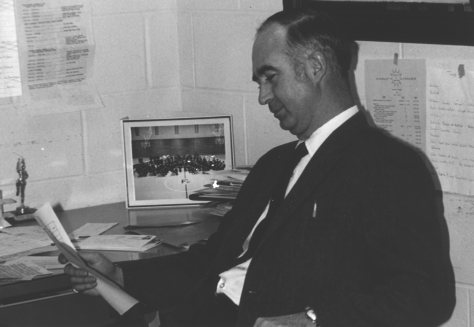Though specific research on multimodal composition efforts at liberal arts institutions is lacking, it is my hope that the implementation process of The University of Findlay’s Multimodal Composition Initiative offers some initial insight. Based on the Initiative to date, I conclude that the environment of the liberal arts institution provides a useful incubator for altering the scope of multimodal composing at the institutional level. This is not to say that multimodal composition efforts are not successful at other types of institutions, as it is clear that many research universities such as The Ohio State University and community colleges such as Spokane Community College have successfully developed programs and courses that incorporate Web 2.0 technologies at multimodality.
Still, the liberal arts college environment offers some previously unexplored benefits. In language from OSU’s Digital Media and Composition Institute, I’d like to make a “brief/case” for multimodal composition at the liberal arts college. A built-in commitment to writing inherent in the liberal arts tradition combined with a culture that supports a comprehensive view of communication (through art, music, and speech as well as print) offers some unique resources/benefits for the small/liberal arts college writing program administrator:
1). The process of multimodal composing is a natural instructional match for a liberal arts college because it already fits into a pre-existing culture of using all available tools of communication to make knowledge.
Because a liberal arts education is concerned with “content, skills, the creation of a whole person, and that person’s action in the community” (Kaplan, 1992, p. 47), it makes sense that LACs begin to incorporate the technologies students already use to communicate in their non-college lives. Rather than adopting multimodal assignments to provide students with technology “skills” alone, instruction can be folded into the existing mission of the liberal arts college. Despite an underlying perception by LAC administrators and faculty that technology potentially dilutes a liberal arts education by focusing on "skills," technology and liberal arts instruction are not mutually exclusive. In fact, LACs "must establish the ‘new liberal arts’ of…the ways technology works, and the computer if we want our education to evolve in concert with our culture. Since the predominant culture is technical, we cannot liberate our students unless we introduce them to the information and facts of technology” (p. 60). The mission of generalism that many liberal arts colleges share is enacted through study and knowledge of communication and cultures, including cultures of technology.
2). Writing programs at liberal arts colleges tend to be stable and supported by faculty across a variety of disciplines, allowing the opportunity for thoughtful integration of multimodality by interested parties.
Because writing is embedded in the missions of many LACs, writing program administrators often do not have the additional challenge of raising the profile of writing among faculty outside English departments. Writing is viewed as valuable in the curriculum, versus just a "first-year composition" requirement, and faculty from areas outside English are usually invested in enhancements to the writing program. Still, revising a writing program is a daunting enterprise. Andrea Lunsford (2006) writes about her revisions of the writing program at Stanford University that “…teaching writing based on a substantive redefinition of writing affects every single aspect of our work: our theories of writing, our curriculum, our classroom configurations, our staffing, training, evaluation principles and procedures, our relationships with other programs (and with upper administration), and our methods and materials” (p. 176). Further, WPAs of larger institutions often face pressure from administrators (and likely, professional programs with high numbers of content courses) to reduce composition requirements as a part of a growing trend to reduce general education requirements, leaving little room for true writing program reform (Bamberg, 1997, p.1).
Because writing is already accepted as necessary to the liberal arts enterprise, writing programs, whether present in the form of first-year composition, writing across the curriculum projects, or writing intensive courses, tend to remain stable. While the WPA at a small liberal arts college may face a host of other challenges including a high teaching load, lack of budget, or a general failure by faculty to realize WPA work as intellectual work (Taylor, 2004, p. 59-60), the dominant presence of writing on campus is usually not questioned.
In fact, over investment in the places and spaces of writing on the liberal arts college campus can lead to faculty resistance to overarching “initiatives” if they are perceived as mandates. WPA Rebecca Taylor notes of her own liberal arts college, “My most experienced colleagues send a strong message: Trust us to design our own courses, please. We don’t need a ‘composition expert’ to design writing assignments for us, and those assignments needn’t look alike. This is a liberal arts college, is it not?” (2004, p. 59) While overcoming faculty perceptions of the best venues and methods for writing are unique challenges facing the liberal arts college WPA, limitless possibilities for execution multimodal compositions offer an opportunity to cater to each faculty member’s strengths, both inside and outside the writing program.
